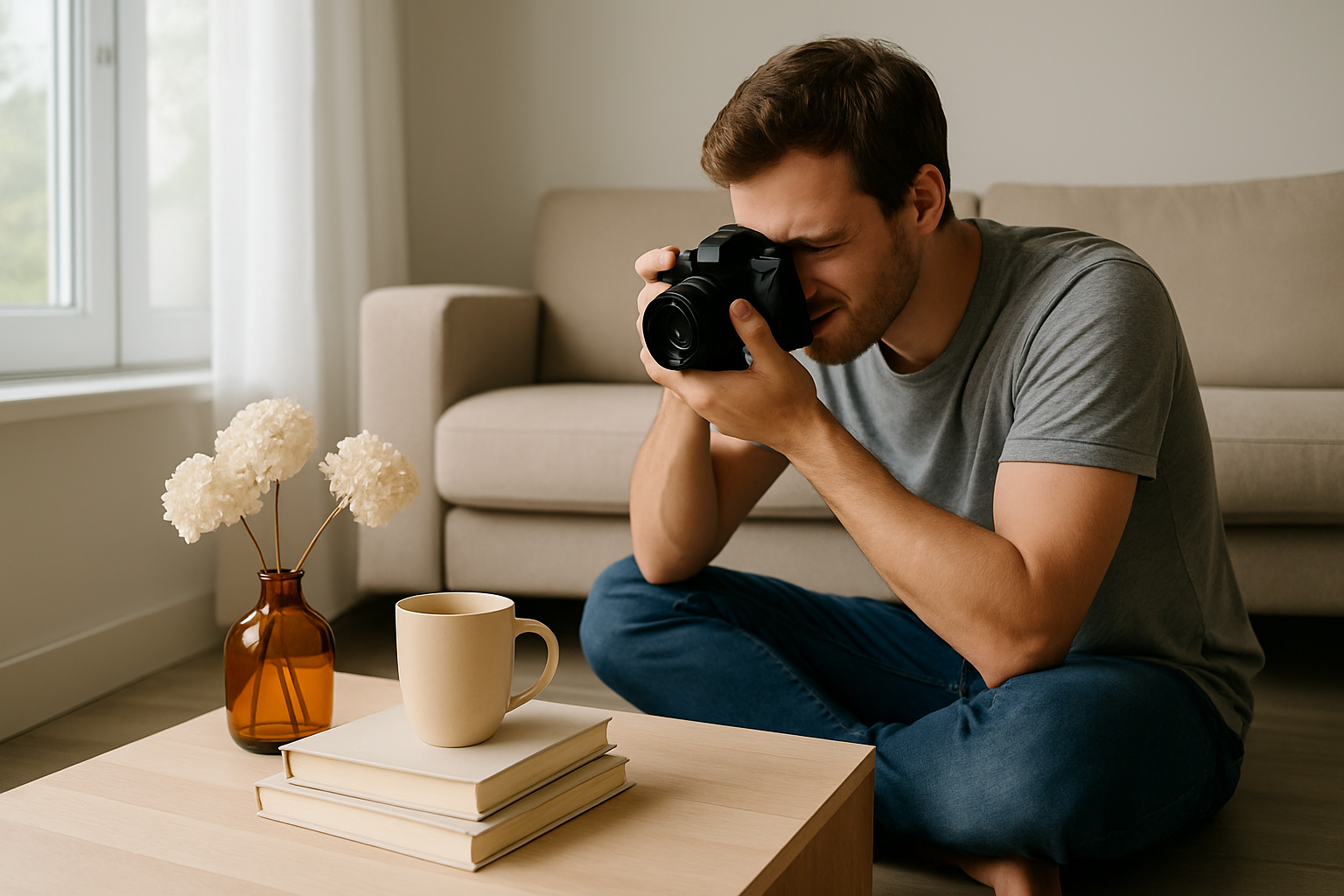You don’t need a studio or expensive gear to improve your photography. With a little creativity and consistency, your home becomes the perfect place to develop your skills. In this guide, we share fun and practical ways to practice photography without leaving the house.
Why Practice at Home?
- Save money on travel and gear
- Work with controlled lighting and objects
- Train your eye and composition daily
- Create a safe space to experiment and learn from mistakes
1. Still Life Photography
Arrange objects like fruits, flowers, books, or kitchen utensils. Focus on:
- Lighting (natural vs artificial)
- Composition (rule of thirds, balance)
- Color contrast and harmony
Try using a table near a window with a plain background. Use cardboard as a light reflector.
2. Self-Portraits
Practice lighting, angles, and focus with self-portraits. Use a tripod or a stack of books as a phone stand. Use your camera’s timer mode or remote shutter app.
3. Capture Light and Shadow
Observe how light enters your home during the day. Try photographing:
- Window light hitting objects
- Silhouettes at sunset
- Patterns of shadows on walls or furniture
4. Macro Photography
Get close to everyday objects like leaves, fabrics, coins, or textures. Use macro lenses for smartphones or magnifying clips. This helps improve detail, focus, and stability.
5. Flat Lay Compositions
Arrange items (like notebooks, accessories, or gadgets) on a clean surface and shoot from above. Flat lays are great for social media content and branding practice.
6. Storytelling Through a Series
Choose a theme and tell a visual story in 3 to 5 photos. Examples:
- Morning routine
- Favorite objects
- A recipe being made step-by-step
7. Recreate Famous Photos
Try imitating iconic images or the style of your favorite photographer. Analyze composition, light, colors, and try to replicate it using available materials.
8. Edit and Review Your Work
After each photo session, review your images. Use editing apps like Lightroom Mobile, Snapseed, or VSCO to adjust colors, sharpness, and exposure. Analyze what worked and what could improve.
Conclusion
Practicing at home is not only convenient but also incredibly effective. You’ll sharpen your eye, learn to control light, and build confidence. Consistency is more valuable than equipment. The more you shoot, the better you get.
